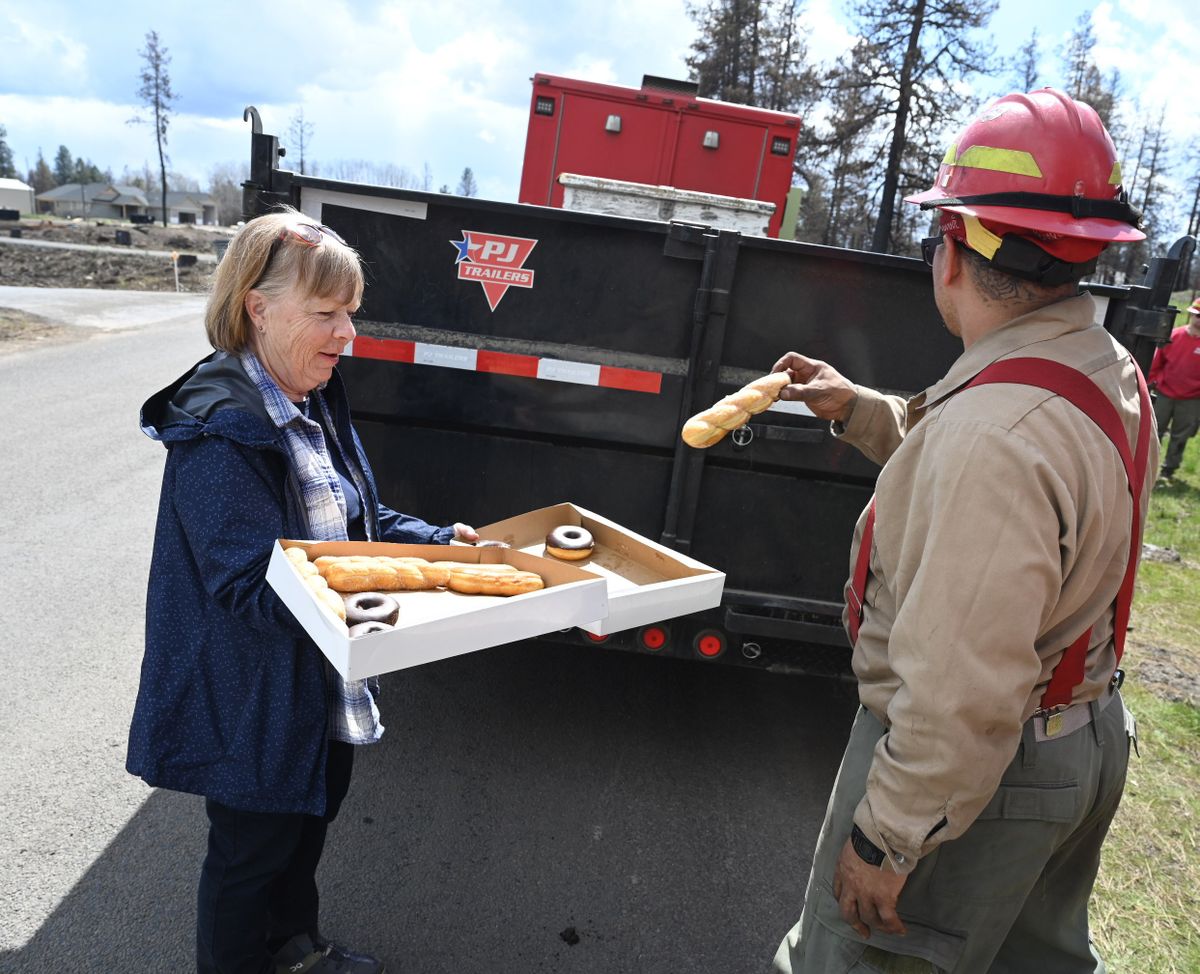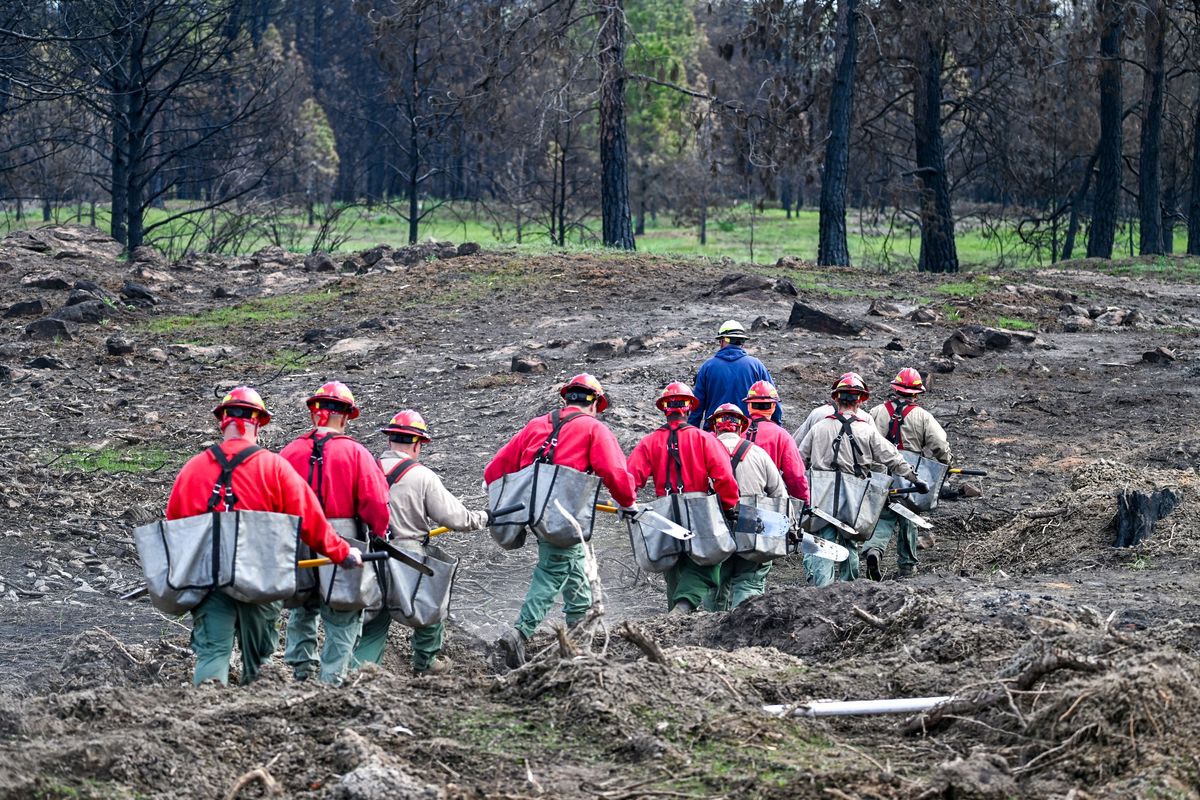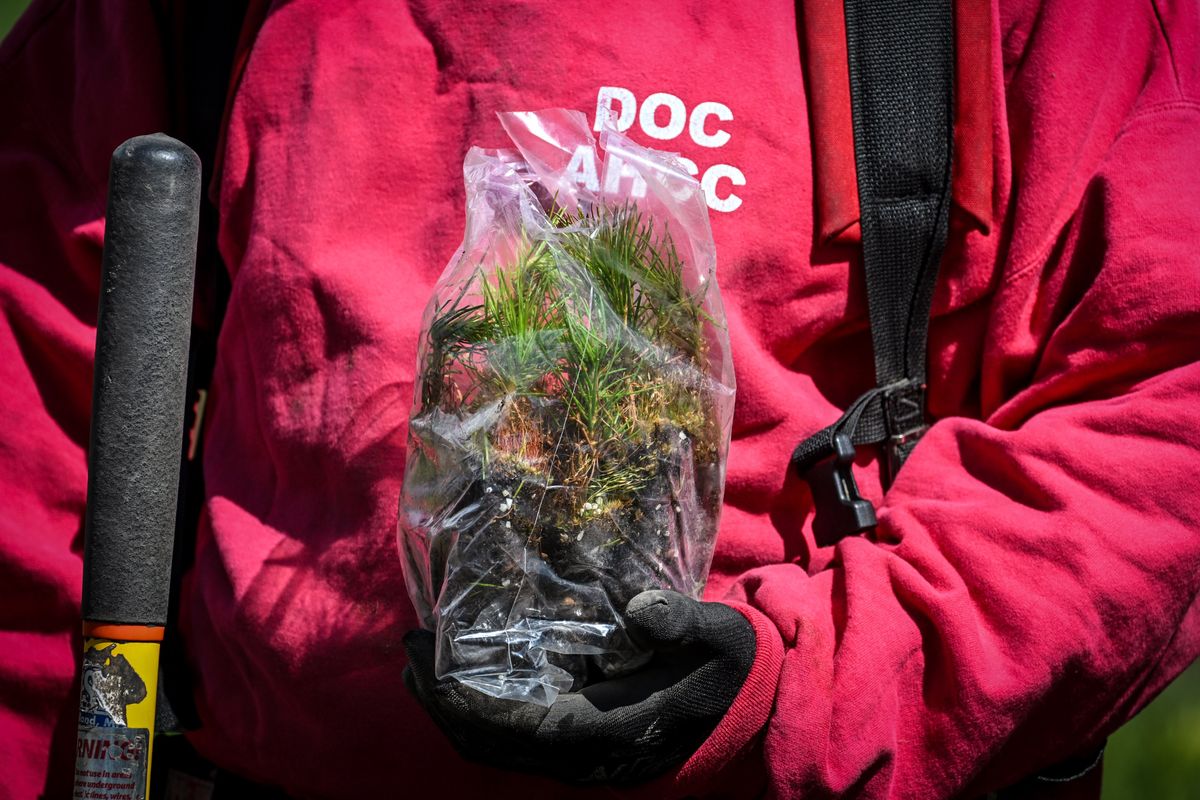Prison inmates help restore torched Gray, Oregon Road fires landscape as part of DNR pilot program
A DOC incarcerated individual holds a bag of tree plugs before planting at a burn area on South Medical Lake Road Thursday. (DAN PELLE/THE SPOKESMAN-REVIEW)
Ten prison inmates dug into Medical Lake soil Thursday, placed ponderosa pine seedlings and packed dirt around them to secure the plantings in place.
About an hour later, 400 seedlings had been planted on a 10-acre private property that was decimated last summer by the Gray fire.
With the help of inmates, fire crews and landowners, about 60,000 trees will be planted this spring to offset the destruction of the Gray fire, Oregon Road fire near Elk and other recent fires in northeast Washington.
The plantings are part of a Washington State Department of Natural Resources Post-Fire Recovery Program, which was established in 2021.
The state agency has helped landowners thin forests and reduce fire fuels to protect their properties from wildfires, said Steve Harris, DNR assistant region manager for forest regulation and resilience.
Now, DNR has state funding to help landowners recover after wildfires, which have become more common and destructive in recent years .
“There’s an increased focus of not just fighting the fire, but making landscapes more resilient before and helping recovery after,” said DNR spokesperson Jessa Lewis.
When not fighting fires, inmate crews conduct fuel reduction projects and tree planting on government land. Using incarcerated crews to work on private property, like they did Thursday, is new, Harris said.
“This is brand new for us getting in this game of helping landowners after the fire, so we’re figuring it out as we go,” he said.
Janiece Dallmann is one of over 250 landowner who has signed up for DNR’s pilot program.
The 10-person crew at Dallmann’s property Thursday was from Airway Heights Corrections Center. At least some of them fought the Gray fire.
Harris said the forestry work allows the inmates to acquire job skills that could help them when they are released.
Directed by DNR staff, the crew, dressed in red and light brown long-sleeved shirts, green pants and red hard hats, spread out in a long line and planted the seedlings stored in their shoulder-strapped bags. Maintaining their line, they progressed forward after each seedling they planted.
DNR and the Washington State Department of Corrections did not allow inmates to be interviewed for this report.
Some of the ground was still dry and dusty from the fire that rolled through in August. Other areas were naturally rocky, so the men tried to find the best soil to plant.
“This is really marginal ground for growing trees,” Harris said. “It’s dry, harsh.”
Some charred ponderosa pines still stood on the property.
Dallmann showed cell phone photos of the previously lush greenery in her backyard. The fire destroyed her South Medical Lake Road home and property where she’s lived for 25 years.
Dallmann said she didn’t witness the fire, “but coming back to nothing was kind of overwhelming.”
Construction crews were building her family’s new home Thursday, and she hopes to be moved in by August.
She said she was “very thankful” for DNR and the inmate crew for helping restore the landscape with tree planting, a job the retiree could not have done herself. She showed her appreciation with a box of doughnuts for DNR workers and the inmates.
“That’s my priority, is to get the land re-established, rebuilt and have growth,” Dallmann said.


